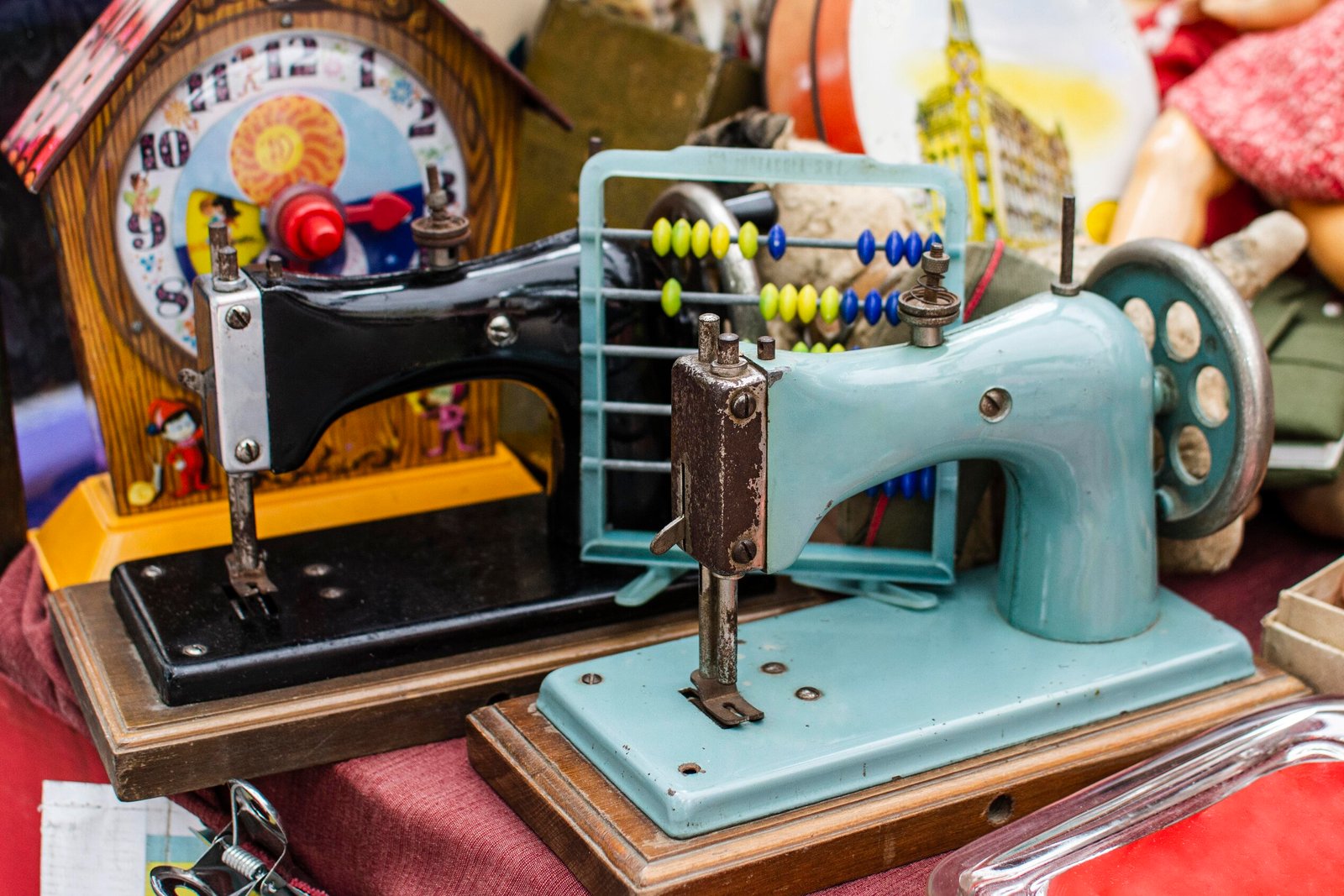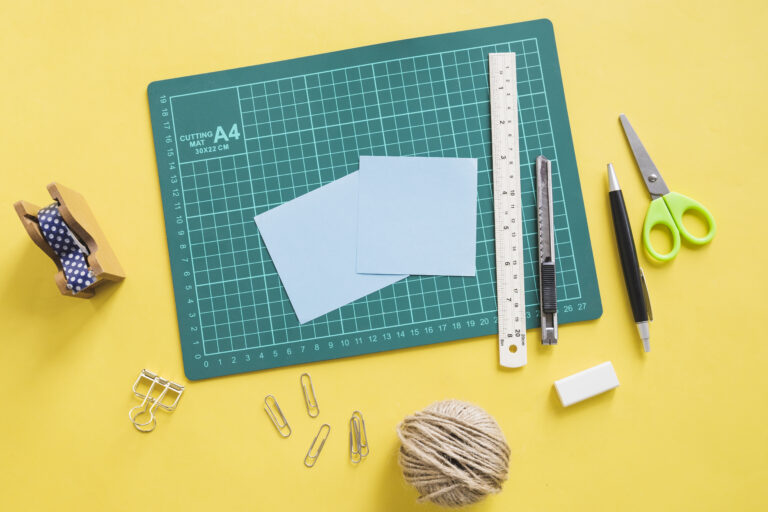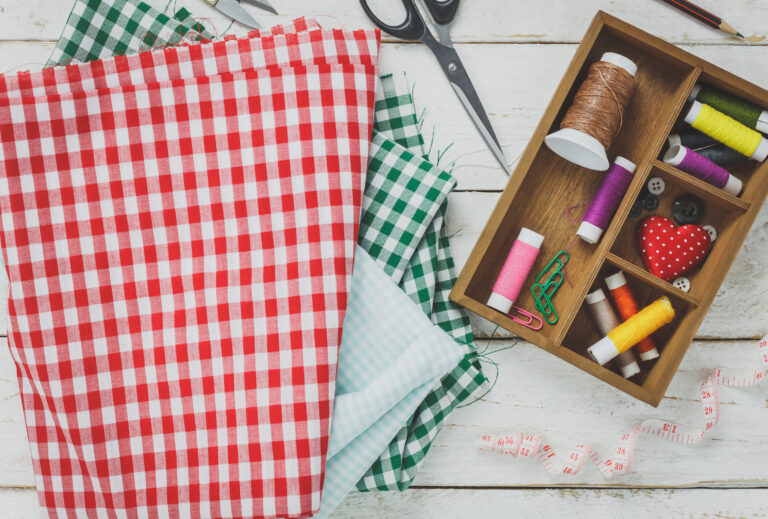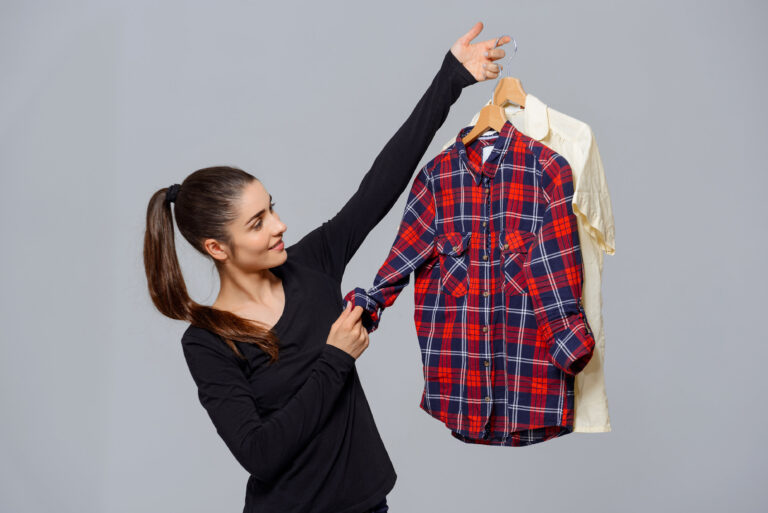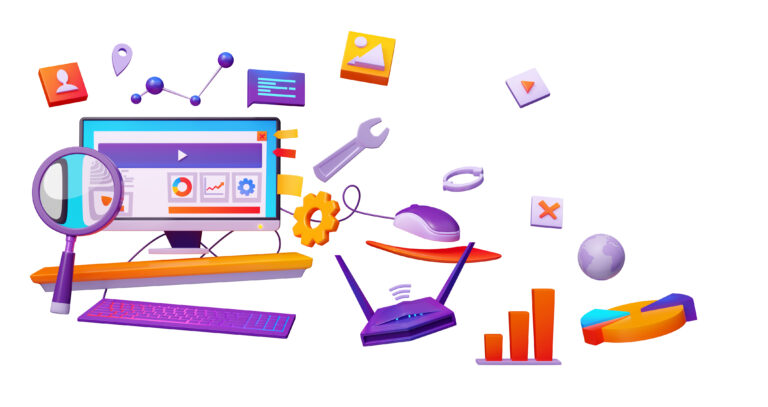Sew Like a Pro: 20 Different Types of Sewing Machines
Sewing is an essential aspect of fashion design, and owning the right sewing machine is crucial for any designer. With numerous types of sewing machines available in the market, choosing the right one for your needs can be overwhelming.
In this post, we’ll explore 20 different types of sewing machines to help you make an informed decision and reduce your workload as a fashion designer.
Also read: Beyond the Tape Measure: Exploring the Top 5 Measuring Tools for Fashion Designers
20 Different Types of Sewing Machines
To create a top notch design, the type of sewing machine matters, therefore, here are the different types of sewing machines to choose from
1. Mechanical Sewing Machines
Mechanical sewing machines are the traditional type of sewing machines that have been in use for centuries. They rely on mechanical parts, such as gears and levers, to create stitches.
They are affordable, easy to use, and reliable, making them ideal for beginners. However, they lack the features and convenience of modern sewing machines.
Advantages of Mechanical Sewing Machines
- Affordable
- Simple to use
- Reliable
Disadvantages of Mechanical Sewing Machines
- Limited features
- Can be slow and noisy
- Manual thread tension adjustment
2. Electronic Sewing Machines
Electronic sewing machines have electronic components that control the machine’s operations. They have motorized functions, such as automatic needle threading, thread cutting, and speed control. They are versatile and can handle various fabric types and thicknesses.
Advantages of Electronic Sewing Machines
- Motorized functions
- Versatile
- Easy to use
Disadvantages of Electronic Sewing Machines
- More expensive than mechanical sewing machines
- Can be complicated for beginners
- Requires electricity to operate
3. Computerized Sewing Machines
Computerized sewing machines have computerized technology that allows the machine to perform complex stitching patterns with ease.
They come with a wide range of pre-programmed stitches and can be programmed to perform custom stitching patterns. Computerized sewing machines are perfect for advanced sewers who require precision and accuracy in their work.
Advantages of Computerized Sewing Machines
- Precise stitching
- Wide range of stitches
- Customizable stitching patterns
Disadvantages of Computerized Sewing Machines
- Expensive
- Complicated for beginners
- Require electricity to operate
4. Overlock Sewing Machines
Overlock sewing machines, also known as sergers, are specialized sewing machines that create professional-looking edges and seams.
they have two needles and loopers that work together to create a stitch that seals the fabric edge, preventing fraying. Overlock sewing machines are perfect for finishing seams, hemming, and creating decorative edges.
Advantages of Overlock Sewing Machines
- Professional-looking edges and seams
- Fast stitching speed
- Can handle various fabric types and thicknesses
Disadvantages of Overlock Sewing Machines
- Expensive
- Complicated for beginners
- Limited stitching options
5. Coverstitch Sewing Machines
Coverstitch sewing machines are specialized sewing machines that create coverstitches, which are two or three lines of stitching on the top side of the fabric and a single line of stitching on the underside. Coverstitch sewing machines are perfect for creating professional-looking hems, necklines, and cuffs.
Advantages of Coverstitch Sewing Machines
- Professional-looking hems and seams
- Can handle various fabric types and thicknesses
- Easy to use
Disadvantages of Coverstitch Sewing Machines
- Expensive
- Limited stitching options
- Require frequent thread changes
6. Blind Hemming Sewing Machines
Blind hemming sewing machines create invisible hems that are perfect for creating a clean, professional finish.
They use a zigzag stitch pattern that tacks the fabric in place without creating visible stitches on the surface. Blind hemming sewing machines are perfect for creating hemlines on pants, skirts, and dresses.
Advantages of Blind Hemming Sewing Machines
- Creates invisible hems
- Fast stitching speed
- Perfect for creating professional-looking hemlines
Disadvantages of Blind Hemming Sewing Machines
- Limited stitching options
- Not suitable for creating decorative stitches
- Requires some practice to achieve the perfect stitch
7. Quilting Sewing Machines
Quilting sewing machines are specialized sewing machines that are perfect for quilting projects. They have a larger throat space that allows the machine to handle bulky fabric layers, making it easy to maneuver the fabric while quilting.
Quilting sewing machines also have a variety of stitches and functions that make quilting easier and more efficient.
Advantages of Quilting Sewing Machines
- Large throat space
- Specialized quilting functions
- Perfect for handling bulky fabric layers
Disadvantages of Quilting Sewing Machines
- Expensive
- Limited stitching options
- Not suitable for general sewing projects
8. Embroidery Sewing Machines
Embroidery sewing machines are specialized sewing machines that create intricate designs and patterns on fabric. They use computerized technology to create designs, making it easy to replicate patterns and designs.
Embroidery sewing machines are perfect for creating personalized items such as monogrammed towels, bed linens, and clothing.
Advantages of Embroidery Sewing Machines
- Create intricate designs and patterns
- Can replicate patterns easily
- Perfect for creating personalized items
Disadvantages of Embroidery Sewing Machines
- Expensive
- Limited stitching options
- Not suitable for general sewing projects
9. Heavy Duty Sewing Machines
Heavy-duty sewing machines are specialized sewing machines that can handle heavy fabrics such as leather, canvas, and denim.
They have powerful motors and durable components that can withstand the rigors of heavy-duty sewing projects.
Advantages of Heavy Duty Sewing Machines
- Can handle heavy fabrics
- Powerful motor
- Durable components
Disadvantages of Heavy Duty Sewing Machines
- Limited stitching options
- Not suitable for general sewing projects
- Can be expensive
10. Portable Sewing Machines
Portable sewing machines are lightweight and compact, making them perfect for on-the-go sewing projects. They are easy to store and transport, making them ideal for sewers who don’t have a dedicated sewing space. Portable sewing machines are also affordable, making them an excellent option for beginners.
Advantages of Portable Sewing Machines
- Lightweight and compact
- Easy to store and transport
- Affordable
Disadvantages of Portable Sewing Machines
- Limited features
- Can be noisy and slow
- Not suitable for heavy-duty projects
11. Cylinder Bed Sewing Machines
Cylinder bed sewing machines have a cylinder-shaped bed that allows the fabric to be sewn in a cylindrical shape. They are perfect for sewing cylindrical items such as sleeves, cuffs, and pant legs. Cylinder bed sewing machines are also great for creating decorative stitching patterns.
Advantages of Cylinder Bed Sewing Machines
- Perfect for sewing cylindrical items
- Can create decorative stitching patterns
- Versatile
Disadvantages of Cylinder Bed Sewing Machines
- Expensive
- Limited stitching options
- Not suitable for general sewing projects
12. Walking Foot Sewing Machines
Walking foot sewing machines have a special foot that grips the fabric and moves it evenly through the machine. They are perfect for handling thick or multiple layers of fabric and are ideal for quilting and leatherwork.
Advantages of Walking Foot Sewing Machines
- Handles thick or multiple layers of fabric
- Ideal for quilting and leatherwork
- Creates even stitching
Disadvantages of Walking Foot Sewing Machines
- Expensive
- Limited stitching options
- Can be heavy and bulky
13. Computerized Sewing Machines
Computerized sewing machines are high-tech machines that have advanced features and functions. They have a digital screen that displays stitch options and other settings, making it easy to select and adjust settings.
Computerized sewing machines also have a memory function that allows users to save and recall stitch patterns.
Advantages of Computerized Sewing Machines
- Advanced features and functions
- Digital display screen
- Memory function for saving stitch patterns
Disadvantages of Computerized Sewing Machines
- Expensive
- Can be complex to operate
- Require regular software updates
14. Overlock Sewing Machines
Overlock sewing machines are specialized machines that create a finished edge on fabric, preventing fraying and unraveling.
They are perfect for creating neat edges on items such as t-shirts and stretchy fabrics. Overlock sewing machines can also be used to create decorative stitching patterns.
Advantages of Overlock Sewing Machines
- Creates a finished edge on fabric
- Prevents fraying and unraveling
- Perfect for stretchy fabrics
Disadvantages of Overlock Sewing Machines
Limited stitching options
Can be expensive
Require some practice to achieve the perfect stitch
15. Coverstitch Sewing Machines
Coverstitch sewing machines are specialized machines that create a professional-looking hemline on garments.
They are perfect for creating hemlines on t-shirts, dresses, and other knitwear. Coverstitch sewing machines can also be used to create decorative stitching patterns.
Advantages of Coverstitch Sewing Machines
- Creates a professional-looking hemline
- Perfect for knitwear
- Can create decorative stitching patterns
Disadvantages of Coverstitch Sewing Machines
- Limited stitching options
- Can be expensive
- Requires some practice to achieve the perfect stitch
16. Serger Sewing Machines
Serger sewing machines are specialized machines that are used to sew seams and finish edges in one step. They are perfect for creating neat edges on items such as t-shirts and stretchy fabrics. They can also be used to create decorative stitching patterns.
Advantages of Serger Sewing Machines
- Creates neat edges and seams in one step
- Perfect for stretchy fabrics
- Can create decorative stitching patterns
Disadvantages of Serger Sewing Machines
- Limited stitching options
- Can be expensive
- Require some practice to achieve the perfect stitch
17. Chainstitch Sewing Machines
Chainstitch sewing machines create a chain-like stitch that is perfect for creating decorative stitching patterns. They are also great for creating strong and durable seams on items such as jeans and workwear.
Advantages of Chainstitch Sewing Machines
- Creates a decorative stitching pattern
- Creates strong and durable seams
- Versatile
Disadvantages of Chainstitch Sewing Machines
- Limited stitching options
- Can be expensive
- Require some practice to achieve the perfect stitch
18. Buttonhole Sewing Machines
Buttonhole sewing machines are specialized machines that are used to create buttonholes on garments. They have a variety of buttonhole styles and sizes to choose from, making it easy to create custom buttonholes on different fabrics.
Advantages of Buttonhole Sewing Machines
- Creates custom buttonholes
- Variety of buttonhole styles and sizes
- Perfect for creating professional-looking garments
Disadvantages of Buttonhole Sewing Machines
- Limited stitching options
- Can be expensive
- Requires some practice to achieve the perfect stitch
29. Industrial Sewing Machines
Industrial sewing machines are heavy-duty machines that are designed for commercial and industrial use. They are perfect for sewing heavy fabrics such as canvas and leather and can handle high volume and high-speed production. They are commonly used in factories and workshops where large quantities of products are being produced.
Advantages of Industrial Sewing Machines
- Heavy-duty and durable
- Can handle heavy fabrics and high production volumes
- Fast and efficient
Disadvantages of Industrial Sewing Machines
- Expensive
- Large and bulky
- Can be complex to operate
20. Multi-Needle Embroidery Machines
Multi-needle embroidery machines are specialized machines that are used to create intricate embroidery designs on fabrics.
They can have up to 10 or more needles, making it easy to create detailed and complex designs. Multi-needle embroidery machines are perfect for creating custom designs on garments and other fabric items.
Advantages of Multi-Needle Embroidery Machines
- Creates intricate embroidery designs
- Can have up to 10 or more needles
- Perfect for creating custom designs
Disadvantages of Multi-Needle Embroidery Machines
- Expensive
- Require some practice to achieve the perfect stitch
- Limited stitching options
Conclusion
Choosing the right sewing machine can make a huge difference in your sewing projects. With so many different types of sewing machines available, it can be difficult to know which one is right for you.
By understanding the advantages and disadvantages of each type of sewing machine, you can make an informed decision and choose a machine that will meet your needs and help you achieve professional-looking results.
Whether you’re a beginner or an experienced sewer, there’s a sewing machine out there that’s perfect for you.
